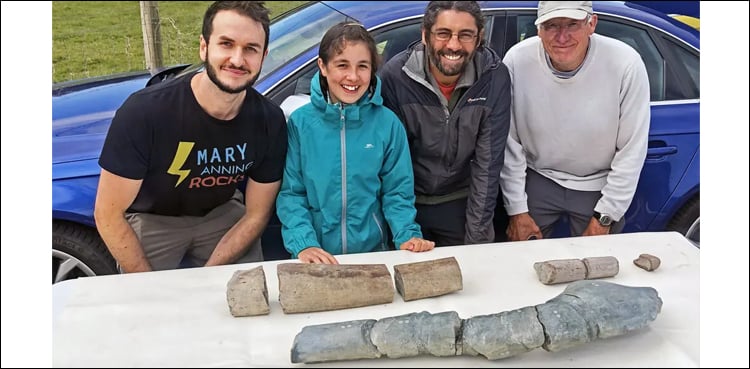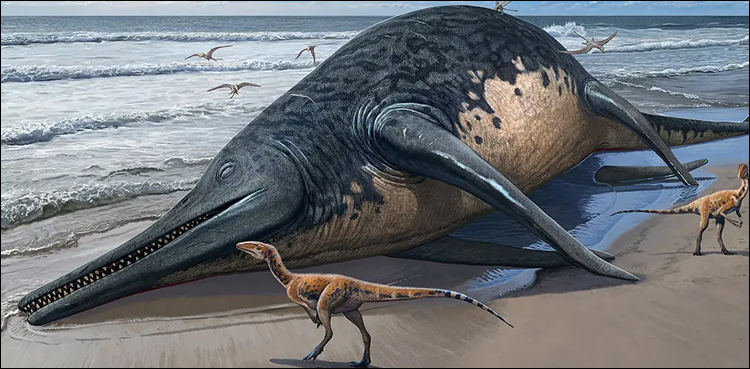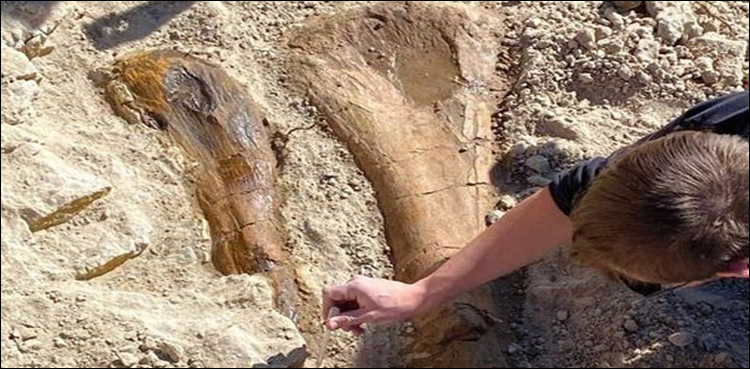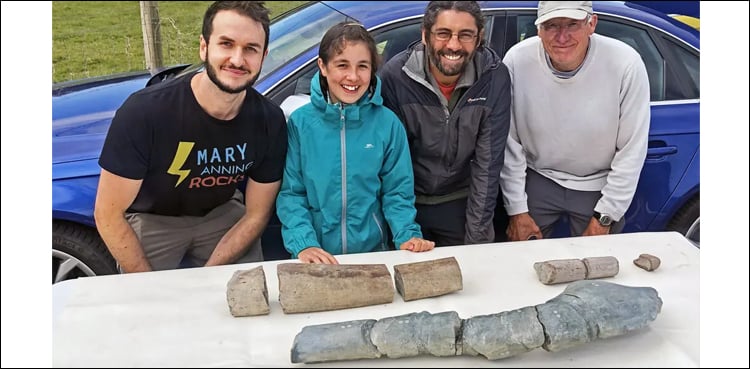An 11-year-old British girl has unwittingly discovered an ancient fossil, which scientists have been surprised to analyze.
In 2020, when an 11-year-old girl, Ruby Reynolds, along with her father, Justin Reynolds, discovered an animal fossil on a British beach in Somerset, they had no idea at the time that they had actually discovered a 20 million-year-old animal. has been discovered.
Now, after the initial analysis of the fossil, scientists have revealed that it is an 82-foot ichthyosaur that swam in the ocean during the time of the dinosaurs, and could also crawl on land. .


Experts believe that the discovered remains belong to a 202-million-year-old marine dinosaur, which scientists have called an ichthyosaur, which is a contemporary animal of the dinosaur itself.
Interestingly, according to a report published in the New York Times, in 1811, a 12-year-old girl named Mary Anning discovered a fossil on the beach near her home in southwest England, a dolphin-like, sea creature from the age of dinosaurs. The reptile that lived in was the first scientifically identified specimen of an ichthyosaur. And now, two centuries later, less than 50 miles away, an 11-year-old girl named Ruby Reynolds has found another ichthyosaur fossil.


Justine Reynolds has been searching for fossils near her home in Brownton for 12 years. Ruby Reynolds, now 15, was out with her father in May 2020 in Blue Anchor, a village along the banks of the River Severn. Meanwhile, they found a piece of fossilized bone on a rock.
Scientific Journal Plus One Dr Dan Lomax, co-author of the study published in the journal Nature, said these are the largest marine reptile remains ever discovered. “When we compared this fossil to fossils of other ichthyosaurs, we estimated that the creature could have been about 25 meters long, about the same size as a blue whale,” said Dr Lomax, a paleontologist at the University of Bristol.
Analysis of discovered bone
The paper’s authors have dubbed the ichthyosaur the ‘giant fish-lizard of the Severn River’. By looking at the imprints of the bone that was discovered, the research team also guessed that it is the jawbone of an Akhtiosaur.


To further confirm its identity, the researchers enlisted the help of biologist Marcello Perillo of the University of Bonn in Germany. When Marcello examined the bone under a microscope, he found distinctive criss-cross collagen fibers, which That is characteristic of an ichthyosaur. Marcelo also hypothesized that although the jawbone was large in size, it was still growing when the animal died.


According to Dr. Lomax, the ichthyosaur is the animal that lived just before the big extinction, which ended the Triassic Period. He said that when large extinction events take place like this, the first to perish is the creature that is the largest, so according to the estimate, the ichthyosaur was the largest creature in the sea at that time, which is the great extinction. suffered from
Comments
(function(d, s, id) {
var js, fjs = d.getElementsByTagName(s)[0];
if (d.getElementById(id)) return;
js = d.createElement(s); js.id = id;
js.src = “//connect.facebook.net/en_US/sdk.js#xfbml=1&appId=1763457670639747&version=v2.3”;
fjs.parentNode.insertBefore(js, fjs);
}(document, ‘script’, ‘facebook-jssdk’));



